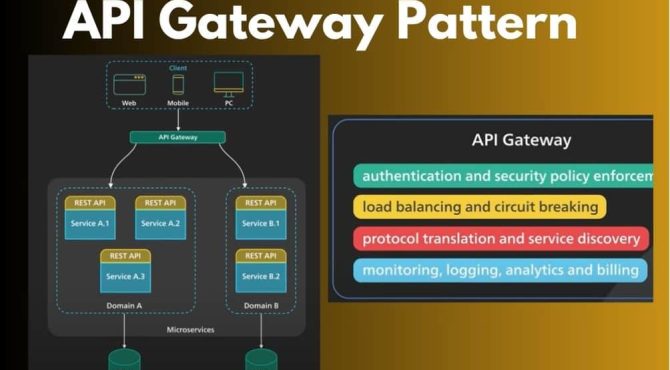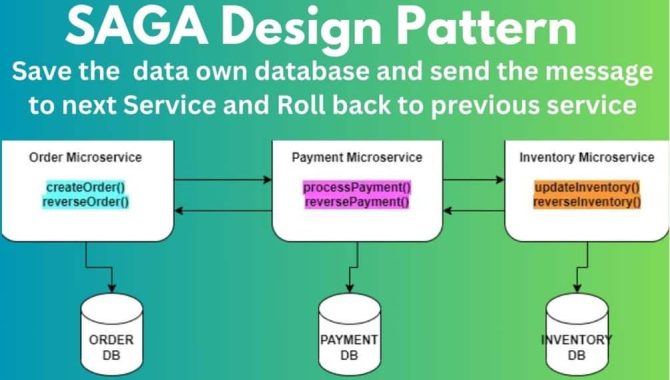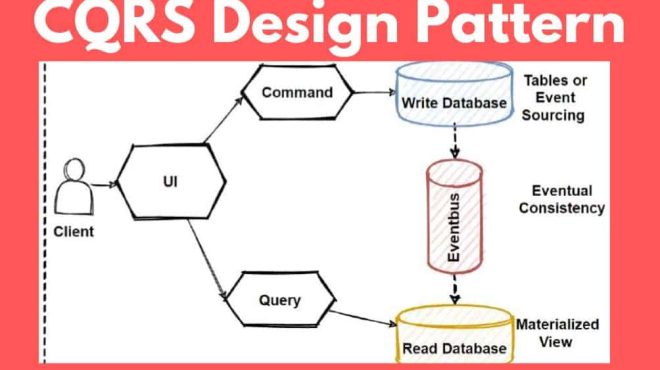Ther are two main architecture in Software development (to develop any web application or mobile application) like as: Microservices architecture and Monolithic architecture.But in today ere Microservices are very famous because Microservices are an architectural and organizational pattern made for software development.
In Microservice architecture every service or module connected with a seprate database. Microservice is loosly coupled and more maintainable at time of maintenance. With microservices architectures, applications can be scaled and developed more quickly, enabling innovation and accelerating time-to-market.In this section we will discuss Microservice architecture related questions and answers with very easy way.

Table of Contents
Toggle1). What is Microservice Architecture ? or Microservice Architecture. (Imp Question)
Microservice is architecture where In this architecture every service or module (or module as a multiple application) is
connected with a seprate Database connection.
Microservice architecture can use different language for different micro-services (or services) but they can have communicated with each other by using the Http/Rest Template or Messaging tool like as: Kakfa extra.
Name of some famous companies which are using Microservice architecture: Most large-scale websites like Twitter, Netflix,
Amazon, have advanced from a monolithic architecture to a microservices architecture.
2). What are the advantages of microservices?
Here, are some significant advantages of using Microservices:
Technology diversity: Different services or modules can develop with different language,libraries and databases
Fault isolation: If one service is down than other services will properly work.
Greater support for smaller and parallel team
Independent deployment of different services or modules
Deployment time reduce because jar or war file is reduced due to small service or module
3). What are the main features of Microservices in Java?
These are main features of Microservices:
The application is made of small components or modules which can be easily managed
Component complexities are hidden from each other.
The Data Management process is centralized
Microservices support Polyglot architecture
The architecture can be organized in accordance with business requirements
Microservices support implementation of DevOps
4). What are the commonly used tools for Microservices?
These are the commonly used tools for Microservices:
Wiremock
Docker
Hysrix
5). What are main differences between Microservices and Monolithic Architecture? (Most Imp Question)
These main differences between Microservices and Monolithic Architecture:
|
Microservices Architecture |
Monolithic Architecture |
|
Microservices based project are fast at the startup time of project. |
Monolithic Architecture based project are slow at the startup time of project. |
|
It is a loosely coupled architecture. |
It is primarily a tightly coupled architecture. |
|
In Microservices architecture, if you make changes in a single data model, it does not affect others. |
In Monolithic Architecture, any changes in the data model affect the entire database. |
|
Monolithic architecture is one large system and usually contains one codebase. |
Microservices architecture uses small independent modules based on functionality. Eachservice and project is independent of each other. |
|
It mainly focuses on products, not projects. |
It mainly focuses on the whole project. |
6). How to communicate between microservices ? or How to communicate between microservices in Spring Boot?
(Most Imp Question)
In microservices every service can communicate with each other by 3 methods or types:
Synchronous HTTP/REST: Microservices can communicate via HTTP using RESTful APIs, exchanging data in JSON or XML formats.
Example: Spring Boot provides RestTamplete, and WebClient classes to make REST API calls from one microservice to another microservice.
Note : it is based on Request & Response, I mean it depenad on response of request.
Asynchronous or Messaging: Asynchronous communication can be achieved using message queues or message brokers likeas: Apache Kafka or RabbitMQ.
Note: It is only send the message, I mean one way communication.
Service Discovery: Microservices can use service discovery mechanisms like Netflix Eureka or Spring Cloud Consul to locate and communicate with other services dynamically.
8). What are the advantages of using Spring Boot for microservices?
Simplified development: Spring Boot provides a range of features and defaults, reducing the amount of code and configuration required to develop microservices.
Auto-configuration: It automatically configures various components based on classpath dependencies, reducing the need for manual configuration.
Embedded servers: Spring Boot includes embedded servers like Tomcat, Jetty, or Undertow, making it easy to deploy microservices as standalone JAR files.
Cloud-native support: Spring Boot integrates well with cloud platforms and provides support for building cloud-native microservices.
7). How many design pattern used in Microservices ? or What are Microservices Design Patterns? (Most Imp Question)
Microservices design patterns are architectural strategies used to build and organize scalable, modular, and maintainable software systems. By decomposing applications into smaller, independent services, developers can improve flexibility, fault tolerance, and resilience.
1). API gateway pattern
2). Saga design pattern
3). Circuit breaker design pattern
4). CQRS (Command query responsibility segregation)
5). Asynchronous messaging
6). Database per service pattern
7). Aggregator design pattern
8). Event sourcing
9). Strangler
10). Decomposition patterns
Note: During interview, Mostly asked design pattern or most important design patterns for Microservices is : Api gateway, Saga design pattern, Circuit breaker, CQRS and Asynchronous Messaging design patterns.
8). What is API Gateway Pattern in Microservices Architecture? What is the benefit or problem it solve? (Imp Question)
API gateway pattern: Api gateway design pattern work as entry point between UI or Front end side(like as: html, css or angular or reactJs ) and Backend side (Like as:Java).
It is provide a single entry point for clients to access multiple microservices.Whenever a request come from frontend side then it goes through api gateway lawer than it will pass to particular microservice service.
So basically, API Gateway is responsible for handling tasks such as authentication, request routing, load balancing, and caching.
It also help with implementing cross-cutting concerns such as logging, monitoring, and security in a centralized manner, rather than having to implement these features in each individual microservice.
Benefit of api gateway design pattern: It is help to reduce development,maintenance costs and also improve the overall performance and reliability of the microservices system
9). What is the SAGA design pattern? How it is work? (Most Imp Questions)
Saga Design Pattern :
Problem: Microservices architectural build the large and complex software systems.So during implementing microservices, One of the challenges is that to handle data consistency across multiple services
Solution: SAGA design pattern is an approach to address this problem.
SAGA stands for “Saga Design Pattern”. It is a sequence of local transactions. In this pattern, each transaction updates the database and triggers an event or publishes a message for next transaction in saga. If any local transaction fails, saga will trigger series of transactions to undo the changes done so far by the local transactions.
Types of Saga Design Pattern:
There is 2 types of Saga design pattern:
i). Choreography-based(Event or Message based) , II). Orchestration-based
Choreography-based(Event or Message based) : In this Saga design pattern do two things. One is save the data in their separate database and send the message or event to next or previous service.
Order processing system: Here we are explain saga pattern implementation by order Processing system (like as: Food Order online Zomato or any Restaurant food Order.
Suppose there is multiple services like as : Order , payment and Delivery services. User send the order from UI or user side,
it is save by Order service and send message(message like as Order is created) to next Payment service than Payment save thier data in their separatedatabase and send message to next service Delivery service, Delivery service also save their data own database and send message to Order service that order is ready to send to user.
But suppose that may some reason Payment is not done due to some reasons than is will send message to his previous Order service that please roll-back this transaction. for transaction roll-back we use @transaction annotation.
Note: So SAGA design pattern, if transaction is failed between to Services then it will roll-back the transaction.
10). What is CQRS design Pattern in Microservices?
CQRS(Command Query Responsibility Segregation): Command Query Responsibility Segregator (CQRS) pattern is used, when querying between microservices. We can use the CQRS design pattern in order to avoid complex queries to get rid of inefficient joins.
CQRS stands for Command and Query Responsibility Segregation. Basically, this pattern separates read and update operations for a database.
So reading and writing databases have different approaches that we can define the different strategies to handle that operation.
CQRS design Pattern offers to use “separation of concerns” principles and separate reading database and the writing database with 2 databases.We can even use different databases for reading and writing database types like using No-SQL for reading and using relational databases for crud operations.
Note: So we can say that CQRS Design Pattern separates reads and writes into different databases, Commands perform update data, Queries perform read data.
When to use the CQRS Pattern: You can use CQRS pattern if your system has high read-write ratio and also read and write requirements are significantly different. For example, if your system performs read operation 90% of time and only 10% of time write data then you can separate these two operation and optimize it accordingly. So whenever you have a situation where your application is read heavy or write heavy, CQRS pattern can improve flexibility and performance.
The advantages of using the CQRS pattern: The main advantage of the CQRS pattern is that it allows you to optimize the read and write operations independently, resulting in a morescalable and performant application. It also helps to improve the maintainability of the code by separating the concerns of reading and writing data.
————————————————————————————————————————————————————————————————————-
People also ask – What Is Mcroservices architecture | What Microservices Architecture really means | How Microservice Architecture Works | What Is Microservice Architecture In Java | what is microservice architecture in c# | what is microservice architecture in python | what is microservices architecture example | what is microservices architecture in node js | what is microservices architecture in .net core | what is microservices architecture in .net | microservices | microservices interview questions | microservices architecture | microservices in java | microservices design patterns | microservices tutorial | java microservices interview questions | java microservices interview questions and answers for experienced | java microservices interview questions for 5 years experience | java microservices interview questions and answers | java microservices interview questions for 2 years experience | java microservices interview questions javatpoint | java microservices interview questions github | java microservices interview questions geeksforgeeks | java microservices interview questions for 8 years experience | microservices architecture interview questions java | why use java for microservices |
Microservices Architecture Interview Questions| Spring Boot Microservices Architecture Interview Questions
| Microservices Architecture Interview Questions And Answers | Java Microservices Architecture Interview Questions| Microservices Architecture Interview Questions Java |microservices architecture vs monolithic architecture | aws microservices architecture | spring boot microservices architecture diagram
| Microservices architecture spring boot | difference between monolithic and microservices architecture with example| Spring boot microservices architecture | advantages of microservices architecture | Monolithic and Microservices Architecture | Azure Microservices Architecture



